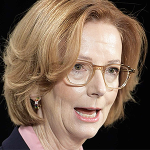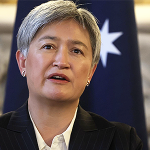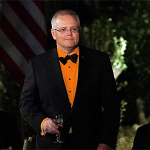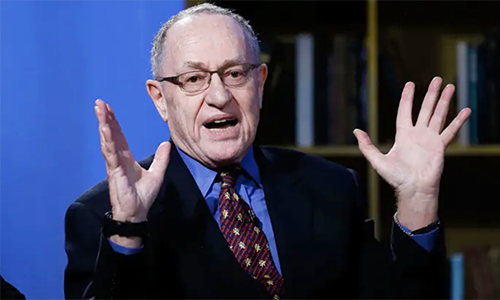
by REX WIDERSTROM – DONALD Trump’s promise to slap tariffs as high as 60 per cent on Chinese goods, and up to 20 per cent on all other imports, will not be as dire for Australia as predicted.
Reserve Bank Governor Michelle Bullock told a Senate Estimates hearing this week that if China were badly affected, Australia would be too, but she repeatedly cautioned that it was still early days.
- But that is the opposite to the path the Albanese Government is taking.
- Albo’s cheering on companies who are piling back into a dangerous bet on the China market.
- The greatest risk from Trump’s tariff policies is that some might try to copy them domestically.
The Bank had modelled any effect of a Trump presidency on Australia’s inflation and cash rate.
“We have a broad understanding of the way some of these policies, if implemented, will work out, but we haven’t done very explicit scenario analysis,” she said.
INFLATIONARY
“There’s things going in all sorts of directions here. It might be inflationary in some ways, but it might be deflationary.”
Michael Shoebridge, director at Strategic Analysis Australia, advises a “wait and see” approach.
“President Trump is a longtime believer in tariffs and applied them to China – and to partners and allies in Europe and the Indo Pacific – in his first term,” he said.
And while tariffs can be economically damaging to the US economy because of their inflationary effect, the fact that trade measures against China are popular with the voters who elected Trump will likely see him push through at least part of that agenda, Shoebridge predicts.
“I expect him to deepen the trade confrontation with China and to use increased tariffs as a key tool.
“That will compound China’s existing – mainly domestic and government-induced – economic problems at a very bad time for Xi Jinping.”
Any further slowing in China’s economic growth is of concern, but since Australia’s main exports to China – iron ore, coal and gas – aren’t major components of China’s exports to the US, Shoebridge says “the direct effect will be smaller than catastrophiers predict”.
“Overall, though, as the determination of the US to check China’s predatory approach to economics continues, it’s smart policy for Australia to push to diversify its economy away from China’s,” he says.
“But that is the opposite to the path the Albanese Government is taking, which is all about celebrating Beijing slowly ending its coercion of Australia economically, and cheering on Australian companies who are trying to pile back into a dangerous big bet on the China market.”
Since the Labor Party won power in 2022, relations between Australia and China have softened somewhat with Beijing lifting a series of trade bans on exports to the country.
“Lobsters and photos of grinning Anthony Albanese, Penny Wong and Don Farrell are examples of this short-sighted, self-damaging policy approach in action.”
Shoebridge says Beijing is obviously concerned about the deepening economic confrontation that a Trump administration may bring.
CHARM
“That’s a good sign that it might be a smart move,” Shoebridge says. “I expect Xi Jinping to see if he can charm Donald Trump in other ways – and that will be odd theatre for us all to see.”
Graham Young, executive director of the Australia Institute for Progress, said the president-elect’s policies did pose a challenge to the current world trading system, but noted global markets are big enough to absorb any changes.
“It’s likely we’ll develop into two trading blocs, both large enough to capture most of the economies of scale and specialisation inherent in international trade,” he predicts.
“In fact, the greatest risk from Trump’s tariff policies is that people might try to copy them domestically.
“Australia is a small economy of 26m without the scale to produce all we need at the lowest cost, which is an entirely different situation to a county of 315 million,” Mr Young said.
Australia’s most significant exports to the US are financial services, gold, sheep and goat meat, transportation services and vaccines.
Currently, the relationship is governed by the Australia-US Free Trade Agreement (AUSFTA), signed in January 2005.
Over 97 per cent of Australia’s non-agricultural exports to the US (excluding textiles and clothing) are now duty-free, and three-quarters of agricultural tariffs have been eliminated.
Under AUSFTA, Australian companies also have access to the US federal government procurement market, valued at $958b, and the government procurement markets of 31 US States.
Under the agreement, two-way trade has grown from $48b to $116b since it came into effect.PC










